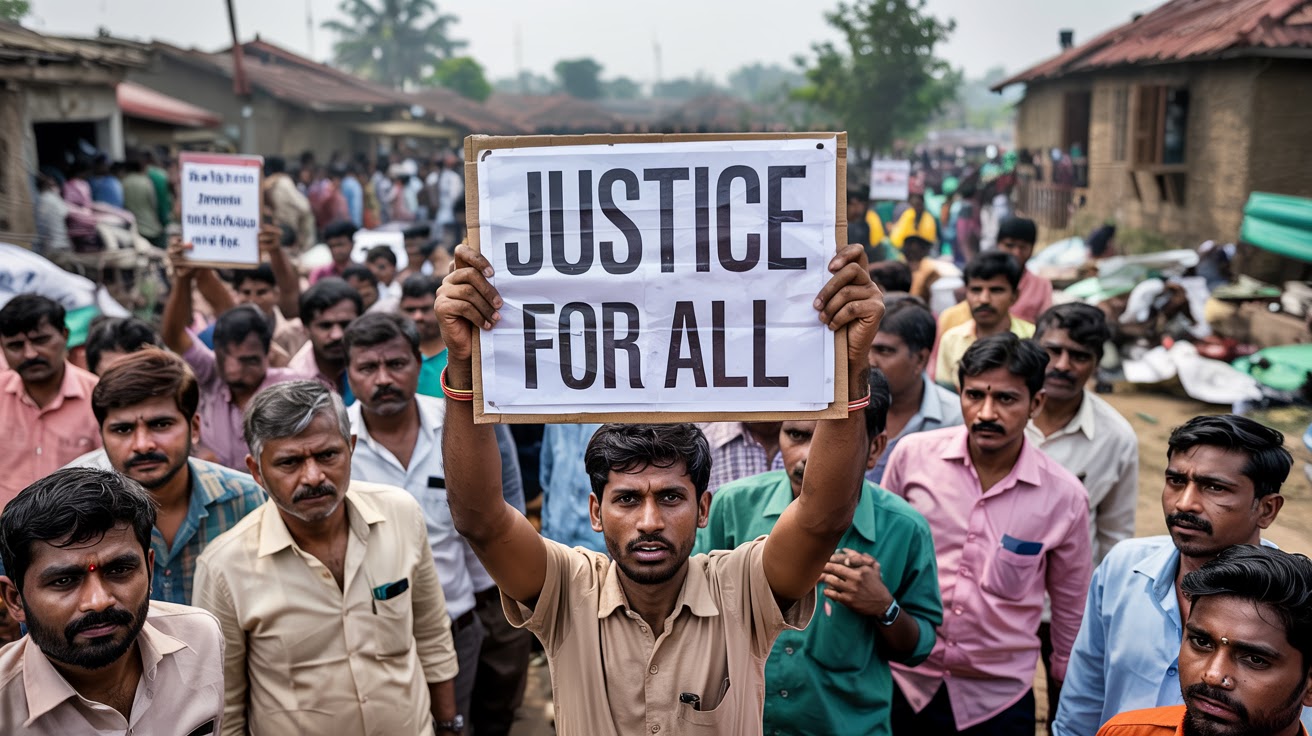 |
| Violence Erupts Over Land Law in India: Three Killed Amid Accusations of Anti-Muslim Bias |
Violence Erupts Over Land Law in India: Three Killed Amid Accusations of Anti-Muslim Bias
Introduction
Tensions boiled over in India this week as violent protests erupted over a controversial new land law, resulting in the deaths of three individuals and the injury of dozens more. The law, criticized by opposition leaders and minority rights groups as being discriminatory towards Muslims, has sparked outrage across several regions. Demonstrations turned deadly as clashes between protestors and police escalated, drawing nationwide attention and international concern.
The Controversial Land Law
The new land law, introduced by the state government in [State Name], aims to regulate property ownership and development. Officials claim the law is intended to streamline real estate transactions and attract investment. However, critics argue that it disproportionately affects Muslim communities by making it harder for them to own land or relocate to certain areas.
The law includes provisions that limit land purchases by non-locals and redefine agricultural zoning regulations, which many fear could be manipulated to exclude minority populations from economic development zones or urban settlements. Activists say the law’s language is vague and open to selective enforcement.
Protests Turn Violent
What began as peaceful demonstrations in [City Name] and surrounding towns quickly escalated. On [specific day], thousands of people took to the streets, waving banners, chanting slogans, and demanding the repeal of the law. The situation turned violent when security forces attempted to disperse protestors using tear gas and baton charges.
Eyewitnesses reported scenes of chaos as some demonstrators retaliated by throwing stones and setting vehicles on fire. In the melee, three protestors were killed—two reportedly by police gunfire and one by injuries sustained during the stampede. Local hospitals confirmed dozens of injuries, including police personnel and civilians.
Government Response
The state government has called for calm and announced a judicial inquiry into the incident. Chief Minister [Name] expressed regret over the loss of life but defended the legislation, stating that the law is “misunderstood and misrepresented by vested interests.”
In a televised address, the Chief Minister urged protestors to refrain from violence and engage in dialogue. "This law is meant for development and fairness, not discrimination," he said. He also promised that no community would be marginalized and that the administration would work with minority leaders to clarify the law’s implications.
Opposition and Civil Society Reaction
Opposition parties have seized on the issue, accusing the government of using legal instruments to marginalize religious minorities. [Opposition Leader Name] called the deaths “a tragic result of institutional discrimination” and demanded the law’s immediate repeal.
Human rights organizations and civil society groups have also condemned the violence. Amnesty International released a statement calling for an impartial investigation and accountability for the use of lethal force. "Citizens have a right to protest peacefully. The use of excessive force is unacceptable," said Amnesty’s regional director.
Religious and Communal Tensions
The protests have reignited broader concerns about growing religious polarization in India. In recent years, several laws and policies—ranging from citizenship amendments to religious conversions—have been perceived as targeting Muslim communities. Critics argue that these measures erode India’s secular foundations and foster an atmosphere of exclusion.
In some areas, the land law protests have taken on a communal dimension, with reports of interfaith clashes and mosque vandalism. Community leaders are calling for restraint and urging all sides to avoid actions that could incite further violence.
Media and Public Discourse
Coverage of the protests has been extensive, with social media playing a central role in mobilizing support and spreading information. Hashtags like #LandLawProtests and #JusticeForVictims have trended on platforms like Twitter and Instagram. However, misinformation has also proliferated, with some users sharing doctored videos or unverified claims that have further inflamed public sentiment.
National news channels have offered varying narratives. Some have focused on the law’s potential benefits for economic growth, while others have highlighted its impact on minority communities. The polarized media coverage reflects deeper divisions within Indian society on issues of religion, identity, and governance.
International Reaction
The international community has begun to take notice. Several human rights watchdogs, foreign diplomats, and international media outlets have expressed concern over the developments. The U.S. State Department issued a brief statement urging Indian authorities to “respect human rights and ensure the right to peaceful protest.”
The United Nations Human Rights Office also weighed in, calling for transparency and dialogue to resolve the dispute. “All communities must be included in policymaking that affects their livelihoods and civil rights,” said a spokesperson.
A Call for Dialogue and Reform
As India grapples with the fallout from the protests, many voices are calling for greater transparency and inclusive governance. Legal scholars have urged a review of the land law to ensure it complies with constitutional protections and does not disproportionately impact any community.
Public intellectuals and religious leaders have emphasized the importance of interfaith dialogue and communal harmony. “We must come together as a nation to ensure that laws are just, inclusive, and serve the interests of all citizens, regardless of religion or background,” said Imam [Name], a prominent Muslim cleric.
Conclusion
The tragic deaths during the protests over India’s new land law underscore the volatility of religious and social tensions in the country. While the law’s proponents argue it promotes development, its critics fear it could deepen existing divides and institutionalize discrimination. As investigations begin and dialogue unfolds, India stands at a crossroads—between further polarization and the potential for more inclusive policymaking that honors its democratic ideals and pluralistic identity.


